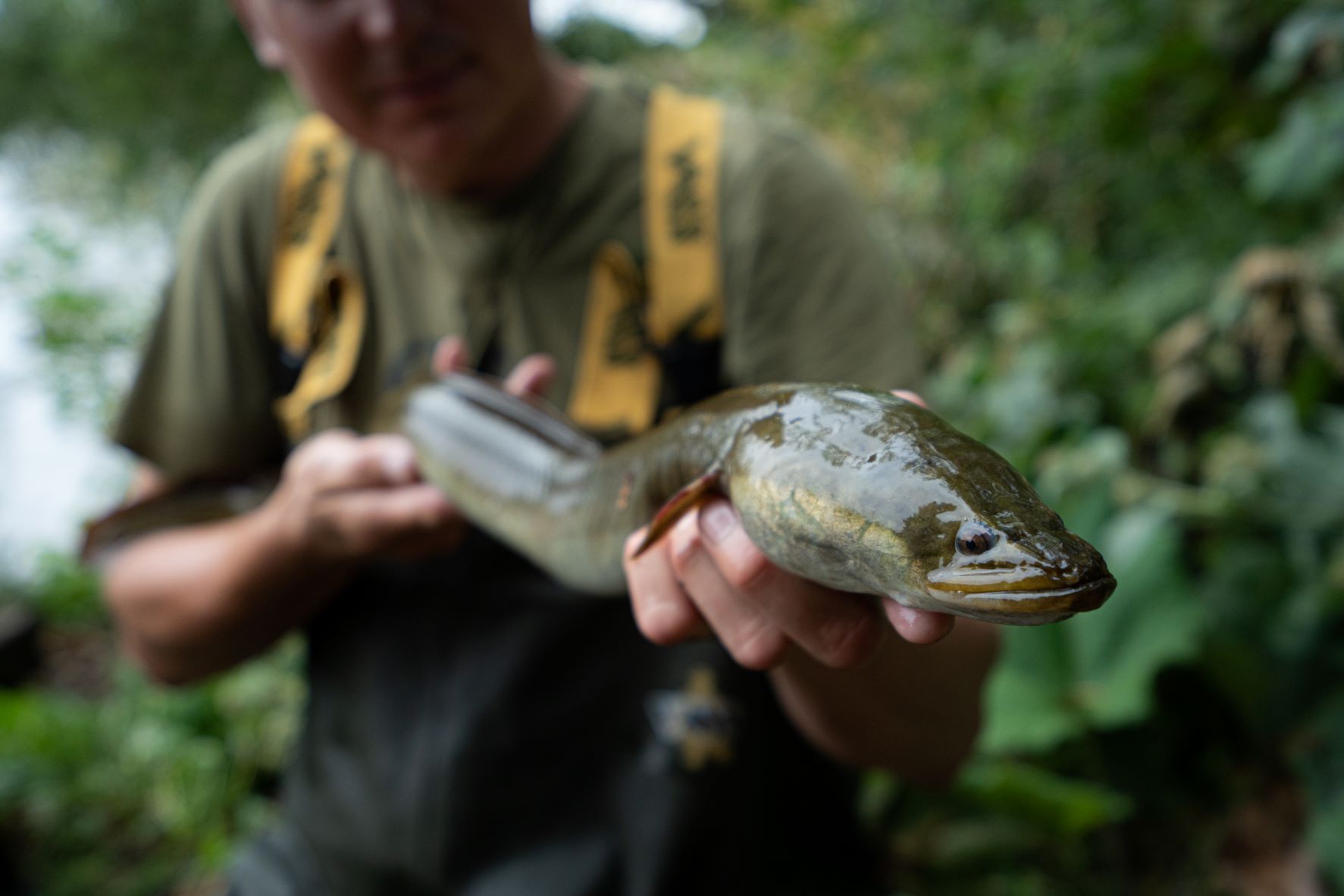Eel | Fish Species Guide | Angling Direct

Eel
aka Anguilla anguilla
Sea born, the common eel starts life rather transparent but becomes a darker green/brown as they travel to their much preferred, dark and heavily coloured waters. Mostly found in the rivers coming from the Atlantic European countries and in the Mediterranean, eels take three years to reach the freshwater streams of UK and Europe, where they mature and adapts to the freshwater environment. Eels have an elongated, cylindrical body shape with a silvery belly and one pair of pectoral fins and no pelvic fins.
Incredibly toxic, an eels’ blood is poisonous to not only fish but humans! This is designed to discourage other creatures from eating them. The toxic protein found in eels' blood cramps muscles such as the heart, meaning that eel should never be consumed raw.
Stats
Status
Habitat
Dark, heavier coloured waters, over silt and mud, and amongst reeds.
Bait
Worms, maggots, small dead baits & strips of dead coarse baitfish.
Fishing Tackle
Native or Invasive
Native
Where
The Sargasso Sea as juveniles, followed by a trek inland into Europe's rivers. Eels return to the Sargasso Sea to breed.
 Catch Experience
Catch Experience
Video
Blog Highlight
The Ultimate Eel Fishing Guide – With Phil Spinks
In this blog, Angling Direct’s very own Phil Spinks talks us through his tactics for eel fishing as well as his choice of fishing rig; the eel twig rig, baits, location and more! Each summer, for at least a few nights, my attention turns...
Read More